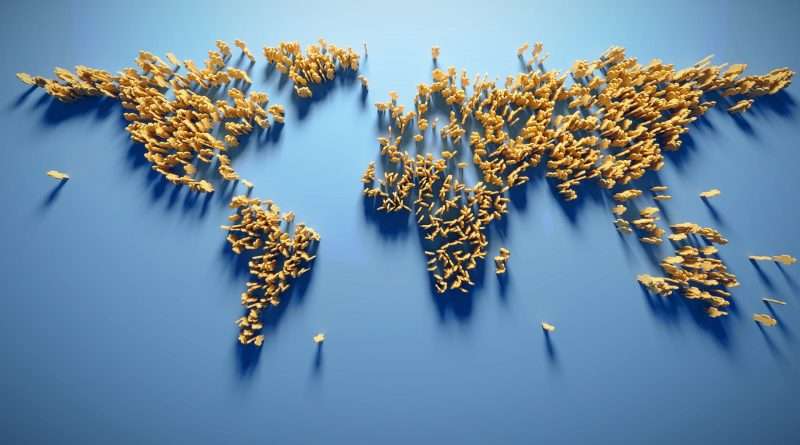Types of Human Geography: Guide
Human geography is a fascinating field that studies people, their communities, cultures, economies, and environmental interactions. It helps us understand how humans shape and is shaped by the world around them. This article will delve into the various types of human geography that play a crucial role in shaping our understanding of the world. By exploring these diverse sub-disciplines, we gain valuable insights into the complexities of human societies and the factors that influence their development. This knowledge is essential for addressing contemporary challenges and creating a better future.
Seven types of human geography
The different types of human geography help us understand the complex relationships between people, places, and the environment. Here is a brief overview and list of the main types of human geography:
- Cultural Geography
- Population Geography
- Urban Geography
- Economic Geography
- Political Geography
- Social Geography
- Health Geography
These diverse types of human geography are interconnected and help us better understand the complexities of human societies and their interactions with the environment.
Cultural Geography
Cultural Geography is a vital sub-discipline of human geography that explores the spatial distribution and interactions of human culture, including beliefs, practices, and artifacts. It emphasizes the importance of understanding how human activities form, maintain and transform cultural landscapes and regions. Cultural geography studies offer valuable insights into language, religion, and customs, shedding light on the diversity of human societies and their unique ways of life. By examining the intricate relationships between culture and space, we gain a deeper appreciation of the dynamic nature of human societies and the role culture plays in shaping our world.

Population Geography
Population Geography is a crucial branch of human geography that investigates the spatial aspects of human populations, including their distribution, density, and growth. It emphasizes the importance of understanding demographic patterns and trends to effectively address various social, economic, and environmental challenges. Population geography also examines demographic transitions, which are shifts in population growth rates due to changes in birth and death rates, as well as migration patterns that influence the movement of people within and between countries. By studying these factors, we can better comprehend the dynamics of human populations and develop informed policies to manage population-related issues.
Urban Geography
Urban Geography is an essential sub-discipline of human geography that focuses on studying cities and urban environments. It seeks to understand the factors that drive city formation and the complex urbanization processes that transform landscapes and societies. Urban geography is crucial in analyzing spatial patterns and structures within cities, including land use, transportation, and socio-economic conditions. By examining these aspects, urban geographers contribute to urban planning and sustainability efforts, helping to create more livable, efficient, and resilient cities. Gaining insights into urban geography is critical for addressing the challenges of rapid urbanization and ensuring a better quality of life for future generations.
Economic Geography
Economic Geography is a vital branch of human geography that investigates the spatial distribution and organization of economic activities, resources, and industries. It plays a crucial role in understanding the factors influencing regional and global economies, such as resource availability, transportation networks, and market access. Economic geography also examines the impact of globalization on economic development, highlighting the interconnectedness of economies and how global trade and investment patterns shape local and regional economic landscapes. By studying these aspects, we can better comprehend the complexities of economic systems and develop strategies to foster sustainable and equitable economic growth.
Political Geography
Political Geography is an essential sub-discipline of human geography that delves into the spatial aspects of political processes and power dynamics. It highlights the importance of understanding how geopolitics, the study of political boundaries, and the organization of territories influence political decision-making and international relations. Political geography also examines the impact of political movements and ideologies on the distribution of resources and the well-being of societies. By exploring these factors, we gain a deeper understanding of the complex interplay between geography and politics, which is crucial for addressing global challenges and fostering peace and cooperation among nations.
Social Geography
Social Geography is a significant branch of human geography that examines the spatial patterns and processes related to social phenomena, such as inequalities, segregation, and integration. It emphasizes the importance of understanding how social structures and relationships are shaped by and shape the spaces they inhabit. Social geography provides insights into community development, allowing us to identify and address issues related to social justice, such as access to education, housing, and employment. By studying these aspects, we can better comprehend the complexities of social dynamics and work towards creating more inclusive and equitable societies, fostering a more profound sense of belonging and well-being for all.
Health Geography
Health Geography is a vital sub-discipline of human geography that investigates the spatial aspects of health and well-being. It highlights the importance of understanding the distribution of diseases and healthcare resources and how environmental factors influence health outcomes. Health geography is crucial in examining access to healthcare services and identifying health disparities among different populations. By studying these aspects, we can better comprehend the complex relationships between health, environment, and society and develop strategies to improve public health and reduce health inequalities. Gaining insights into health geography is essential for creating a healthier and more equitable world.
What Did We Learn Today About the Human Geography?
In conclusion, today, we explored the diverse and interconnected types of human geography, including cultural, population, urban, economic, political, social, and health geography. Each sub-discipline offers unique insights into the complex relationships between people, places, and the environment, shedding light on the factors that shape our world. Understanding these different aspects of human geography is crucial for addressing contemporary challenges and creating a better future. By appreciating the intricate connections between these fields, we can develop more informed policies, promote sustainable practices, and work towards fostering equitable, healthy, and thriving societies for generations to come.

